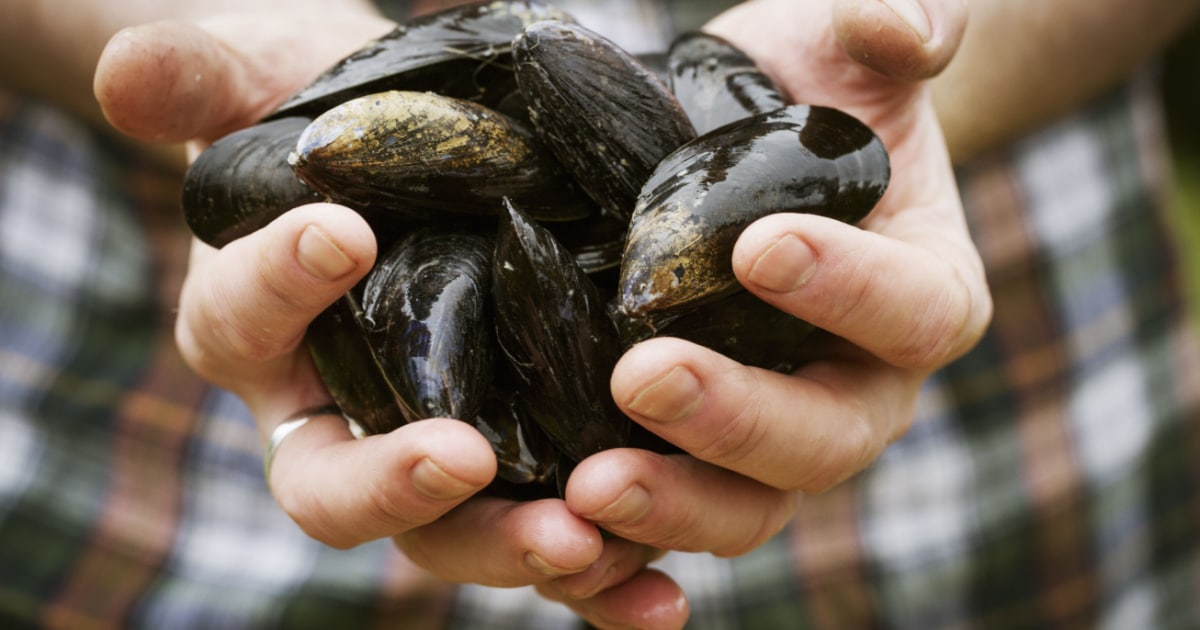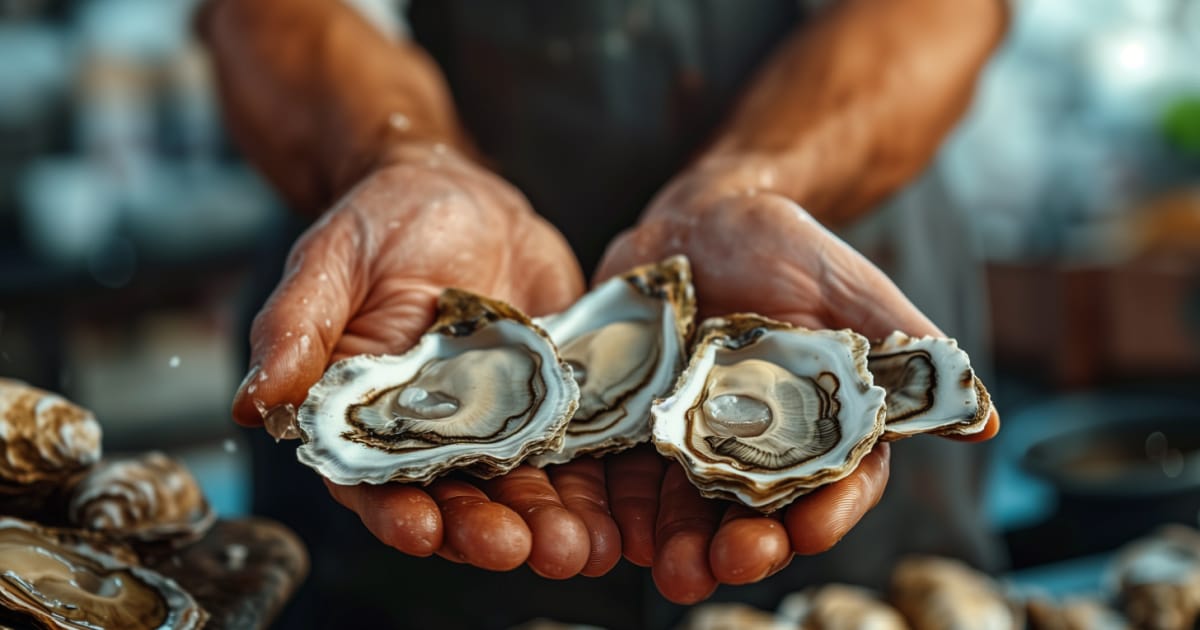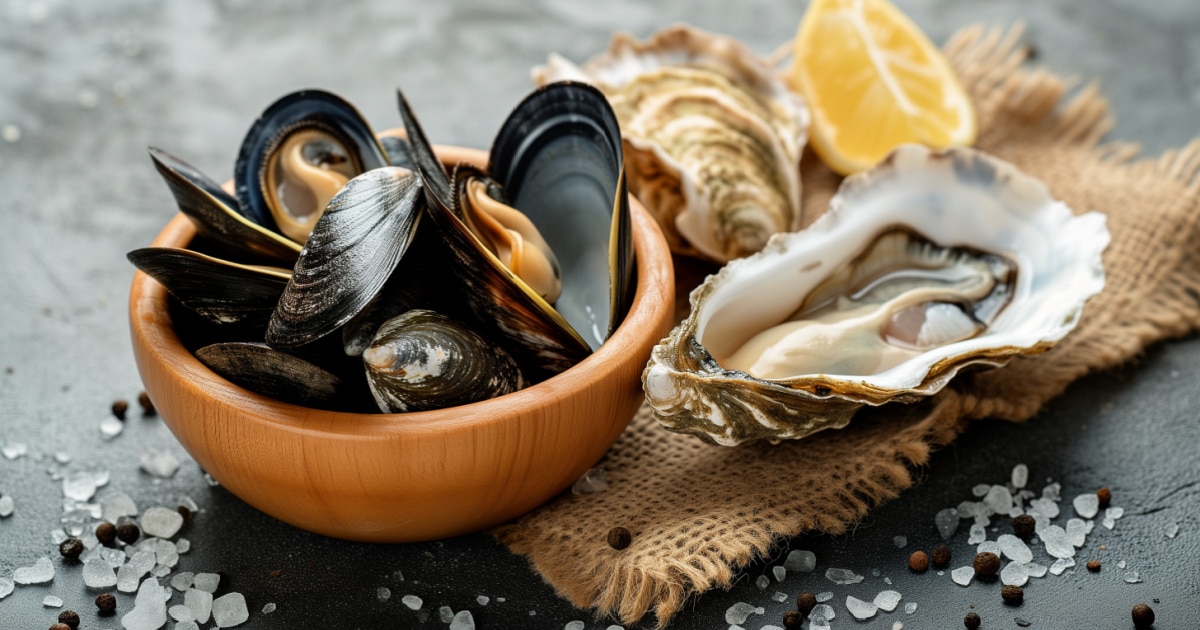Mussels vs Oysters – Unveiling the Seafood Mysteries
Welcome to a fascinating exploration of two beloved seafood delicacies: mussels vs oysters. Both are cherished worldwide for their unique flavors and textures, but they have distinct differences that are worth exploring.
In this article, we’ll delve into the intriguing world of mussels and oysters. We’ll compare these two types of shellfish, examining their physical characteristics, habitats, and how they fit into the culinary landscape. Whether you’re a seasoned seafood aficionado or just curious about these marine treats, this guide will shed light on what makes each of them special.
Join me as we embark on a journey to understand the nuances that set mussels and oysters apart, enhancing your knowledge and perhaps even your next seafood dining experience.
- Mussels vs Oysters: Understanding the Basic Differences
- Habitat and Living Conditions
- Culinary Value: Mussels vs Oysters
- Nutritional Benefits: Mussels vs Oysters – Which Is Healthier?
- Economic Impact and Market Demand: Mussels vs Oysters
- Environmental Role: Water Filtration and Ecosystem Impact of Mussels and Oysters
- Embracing the Diversity of Mussels and Oysters
- FAQs: Common Questions About Mussels vs Oysters
- Explore More From T.L. Morris Seafood
Mussels vs Oysters: Understanding the Basic Differences
When it comes to mussels and oysters, their differences start with their appearance. Mussels have elongated, dark-colored shells, often blue or black. They’re smaller compared to oysters and have a smoother shell surface. Inside, their meat is tender and usually orange or cream-colored.
Oysters, on the other hand, boast a more irregular and rough shell. Their shells are generally larger and can vary in color, often reflecting the environment where they grew. The meat of an oyster is plumper and can range from creamy to a pale gray.
Another key difference lies in their habitat. Mussels are versatile; they thrive in both freshwater and saltwater environments. Often they form clusters, attaching themselves to surfaces using their byssal threads, also known as ‘beards.’ Oysters predominantly live in saltwater, particularly in brackish waters like estuaries. They attach themselves to hard surfaces, forming oyster reefs that are crucial to their ecosystem.
In terms of taste, mussels offer a subtly sweet flavor and are less briny than oysters. Oysters have a distinct taste that varies greatly depending on their environment, often described as a fresh, salty burst of ocean flavor.
Understanding these basic differences sets the stage for a deeper appreciation of what each shellfish brings to the table, both in terms of flavor and ecological impact.

Habitat and Living Conditions
The habitats and living conditions of mussels and oysters reveal more about their unique lifestyles and how they contribute to their ecosystems.
Mussels are adaptable creatures found in a variety of environments. They can thrive in both freshwater rivers and streams, as well as in the saltwater of oceans. Mussels anchor themselves to rocks, docks, and even boat hulls using their byssal threads, forming dense clusters. These clusters can filter large volumes of water, improving water quality and providing habitat for other small marine creatures.
Oysters, in contrast, are primarily saltwater dwellers. They are commonly found in brackish waters like estuaries and coastal bays, where freshwater mixes with seawater. Oysters have a unique way of living; they attach themselves to hard surfaces, often forming extensive oyster reefs. These reefs are not just homes for oysters; they serve as critical habitats for a variety of marine life and act as natural barriers against coastal erosion.
Both mussels and oysters play a vital role in their environments through their filter-feeding habits. They help maintain water clarity and quality by filtering out algae, plankton, and other particles. This filtration process is essential for the health of aquatic ecosystems and contributes to the biodiversity of these habitats.
Understanding the habitats and living conditions of mussels and oysters provides insight into their ecological importance and how they fit into the broader marine world.
Culinary Value: Mussels vs Oysters
When it comes to the culinary world, both mussels and oysters have their unique appeal and uses, each bringing distinct flavors and textures to the table.
Mussels are known for their tender, slightly chewy texture and have a subtle sweetness to their taste. They are incredibly versatile in cooking, easily absorbing the flavors of the ingredients they’re cooked with. Mussels are commonly steamed in broths or wines, often accompanied by herbs and aromatic vegetables. They’re a staple in dishes like the Belgian moules-frites or the Italian cozze alla marinara.
Oysters, on the other hand, are celebrated for their rich, briny flavor that encapsulates the taste of the sea. Their texture is plumper and juicier compared to mussels. Oysters are often enjoyed raw, served on the half shell with a simple squeeze of lemon or a dash of hot sauce to enhance their natural flavors. They can also be grilled, baked, or used in stews and chowders, adding a depth of flavor to various recipes.
The choice between mussels and oysters often comes down to personal preference and the desired culinary experience. Mussels offer a more subtle flavor suitable for a range of cooked dishes, while oysters provide a bold, oceanic taste, often preferred fresh or minimally cooked.
In both cases, the freshness of the shellfish is paramount to ensure the best taste and texture, making them a favorite choice for seafood lovers seeking a true taste of the ocean.
Nutritional Benefits: Mussels vs Oysters – Which Is Healthier?
When comparing the nutritional benefits of mussels vs oysters, it’s clear that both offer a wealth of health advantages, though they have some differences in their nutrient profiles.
Mussels are an excellent source of protein and contain a variety of vitamins and minerals, including Vitamin B12, iron, and manganese. They are also rich in omega-3 fatty acids, known for their heart health benefits. Mussels have a lower calorie count compared to oysters, making them a great choice for those watching their calorie intake.
Oysters, meanwhile, are a powerhouse of nutrients. They are famously high in zinc, which is essential for immune function and skin health. Oysters also provide a good amount of Vitamin B12, iron, and selenium. Additionally, they are known for their aphrodisiac qualities, attributed to their high zinc content. Oysters do have a higher calorie and cholesterol content than mussels, but they are still considered a healthy choice, especially when eaten in moderation.
Both mussels and oysters are low in fat and high in lean protein, making them excellent choices for a healthy diet. The decision between the two often comes down to specific dietary needs and personal taste preferences. Whichever you choose, you’ll be indulging in a nutritious and delicious seafood option.

Economic Impact and Market Demand: Mussels vs Oysters
The economic impact and market demand for mussels and oysters reflect their popularity and importance in the seafood industry.
Mussels are generally more affordable than oysters, making them a popular choice for both consumers and restaurateurs. Their ease of cultivation and the ability to grow in various environments contribute to a steady supply, which helps maintain their affordability. Mussels are a common feature in many cuisines around the world, often seen as a budget-friendly yet delicious seafood option.
Oysters, in contrast, are often viewed as a more luxurious seafood choice. Their price is typically higher than mussels, influenced by the oyster’s growing conditions, the labor-intensive process of cultivation, and their perceived gourmet status. Oysters are a staple in fine dining and are celebrated in various festivals and culinary events, which adds to their allure and demand.
Both mussels and oysters contribute significantly to the global seafood market. While mussels offer a more accessible price point, oysters bring a sense of luxury and exclusivity. The preference for one over the other can vary based on regional tastes, economic factors, and culinary trends, but both remain integral to the seafood industry’s diversity and economic health.
Environmental Role: Water Filtration and Ecosystem Impact of Mussels and Oysters
Mussels and oysters play a crucial environmental role beyond their culinary and economic value, particularly in water filtration and ecosystem health.
Both mussels and oysters are filter feeders, meaning they consume small particles, such as plankton and algae, from the water. This natural filtration process is vital for maintaining clean and healthy aquatic ecosystems. By filtering water, these shellfish help improve water clarity, which in turn supports the growth of underwater vegetation and provides a better habitat for fish and other marine life.
Mussels, with their ability to thrive in both freshwater and saltwater environments, contribute significantly to the health of rivers, lakes, and coastal areas. They can filter large volumes of water daily, removing pollutants and improving water quality.
Oysters, particularly in their reef formations, not only filter water but also provide a habitat for a diverse range of marine species. Oyster reefs can protect shorelines from erosion and serve as natural breakwaters, reducing the impact of waves and helping to prevent coastal degradation.
The environmental benefits of mussels and oysters highlight their importance in marine conservation efforts. Their role in water filtration and ecosystem support underscores the need to protect these valuable species and their habitats.
Embracing the Diversity of Mussels and Oysters
In conclusion, our exploration of mussels vs oysters reveals a fascinating world of differences and similarities. From their distinct habitats and unique culinary values to their significant environmental roles, both mussels and oysters offer more than just a seafood dining experience; they are integral parts of our marine ecosystems.
Whether you prefer the tender sweetness of mussels or the rich, briny flavor of oysters, each has its unique charm and benefits. By understanding and appreciating these differences, we can better enjoy and respect these incredible marine creatures and their contributions to our world.
FAQs: Common Questions About Mussels vs Oysters
1. What are the main differences between mussels and oysters?
- “Mussels have elongated, smooth shells and are found in both freshwater and saltwater. Oysters have irregular, rough shells and primarily live in saltwater.”
2. Which is healthier to eat, mussels or oysters?
- “Both are healthy, but oysters are higher in zinc and vitamins, while mussels offer more omega-3 fatty acids and lower calories.”
3. Can you eat both mussels and oysters raw?
- “Yes, both can be eaten raw, but oysters are more commonly served this way. Ensure they are fresh and from a reliable source.”
4. How do mussels and oysters filter water?
- “They filter water by consuming small particles like plankton, thereby improving water clarity and quality.”
5. Are mussels or oysters more environmentally beneficial?
- “Both play crucial roles in ecosystems, but oyster reefs are particularly valuable for shoreline protection and habitat creation.”
6. Why are oysters more expensive than mussels?
- “Oysters are often seen as a luxury food and their cultivation is more labor-intensive, contributing to their higher price.”
7. How do mussels and oysters reproduce?
- “Both reproduce by releasing eggs and sperm into the water, but oysters also have the unique ability to change their sex during their lifetime.”
8. What is the best way to cook mussels and oysters?
- “Mussels are great steamed or in broths, while oysters can be enjoyed raw, grilled, or baked.”
These FAQs provide quick and informative answers to common queries about mussels and oysters, enhancing the reader’s understanding of these fascinating shellfish.
Explore More From T.L. Morris Seafood
If you enjoyed this post, you’re in for a treat! Dive deeper into seafood with some of my other articles that readers have loved:
- Why Do Oysters Make Pearls? A Fascinating Exploration!– Dive into the mystery of ‘Why Do Oysters Make Pearls?’ and discover the captivating secrets behind these underwater treasures!
- When Are Oysters in Season? It May Surprise You!– Learn ‘When Are Oysters in Season’ and the best months to enjoy these shellfish, from the Chesapeake Bay to the Pacific Northwest.
- Are Oysters Good for You? The Comprehensive Guide– Discover the health benefits of oysters in our latest article: Are oysters good for you? Dive into the facts now!
- Unlock the Secrets: How Do Oysters Reproduce?– Explore the fascinating process of how do oysters reproduce, from spawning to larvae growth, and their vital role in marine ecosystems.
Stay connected and keep exploring! Don’t forget to subscribe for the latest updates and insights.

